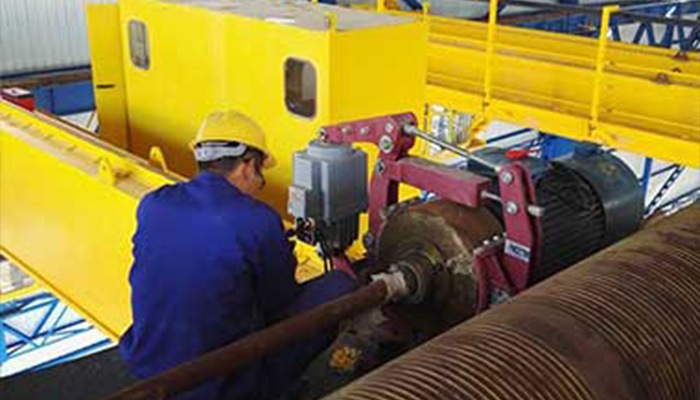
Overhead Travelling Cranes Common Problems Diagnosis & Solutions
Your overhead travelling crane, like any other piece of equipment or machinery, will require regular maintenance to extend its life and keep it functioning smoothly. Overhead travelling crane problems are something that any business owner should be concerned about, and we recognize that buying an overhead travelling crane is a substantial investment that you'll want to preserve.
As an overhead travelling company which provide one stop crane serives such as, inspect, and repair overhead travelling cranes and hoists, a list of the five most common issues with overhead travelling cranes are provided help you to have a better understand what issues or problems you might face over the life of your overhead travelling crane and the solution what can you do to help prevent or lessen them.
Establishing a regular inspection program for your overhead traveling crane is recommended. To assist extend the life of your crane and its components, you should follow the manufacturer's recommendations for service and maintenance intervals and consider duty cycle and environmental considerations when building your crane.
Common problems of overhead travelling cranes:
Wire Rope
Birdcaging, corrosion, abrasion, and excessive wear are just a few of the issues that an overhead travelling crane's wire rope can face. Inspection of your wire rope on a regular basis is the best approach to avoid damage or failure.
One of the most prevalent problems with an overhead travelling crane system is damage or degradation to the wire rope. There are a variety of common wire rope issues, including the ones listed below:
- The reeving system's wire rope has leaped out.
- Loss of core support, internal or external corrosion, and wear of exterior wires if rope diameter is reduced below nominal.
- Outside wire ropes that are broken or worn
- Corroded or broken wire ropes at end connections
The life of wire rope can be influenced by a variety of factors. Bending, stresses, loading circumstances, speed of load delivery (shock load), abrasion, corrosion, sling design, materials handled, environmental conditions (heat or chemical exposure), lubrication, and usage history all play a role in how long wire rope can stay in service.
Inspection of a wire rope prior to each shift is the best way to avoid damage or failure. If there is any sign of damage, the wire rope should be carefully disposed of to avoid further use.
Also, ensure sure the wire rope is greased properly. The benefits of proper wire rope lubrication are twofold:
- Reduces friction as individual wires pass over one another.
- Provides corrosion prevention and lubrication in the core, inner wires, and on the outside surface.
Crane skew and alignment
A skilled manufacturer or service business should design and install your crane's runway system. If you're going to place a crane on an existing runway, ensure sure it's been professionally examined first.
The entire crane system can be stressed and damaged by an overhead travelling crane that is out of alignment and skewing as it goes down the runway. The difficulty with a crane that isn't tracking properly is that forces not accounted for in the design and installation of the overhead travelling crane induce stresses to the runway beams as well as the tie-backs or building support structures over time.
These types of stresses can result in:
- Overhead crane accidents
- Overhead crane failure or derailment
- Overhead lifting equipment downtime and productivity reduction
- Overhead travelling crane repairment and replacement of parts are very costly.
A crane that isn't tracking properly wears out the wheels, wheel bearings, and wheel flanges, as well as the motor drives and other equipment prematurely.
There are a few indicators that your crane isn't correctly aligned and is skewing as it advances down the runway. When your crane is in use, keep the following in mind:
- Extremely loud scratching noises
- Wheel flanges that are broken or cracked
- Wheels, bearings, and rails are showing signs of abnormal wear.
- Extra power is necessary to move the crane along the runway in certain spots.
- Floating or climbing over the railing and then crashing down
Having your overhead traveling crane inspected by a trustworthy third-party service provider on a regular basis is the best approach to avoid skew and alignment difficulties. A crane service provider can inspect your crane rails and runway systems for any flaws and fix them before they become greater difficulties.

Excessive wear to end truck wheels
The crane's end trucks and wheels, motor drives, and other equipment might all suffer from early wear if the runway system isn't properly aligned.
End truck wheels are components of overhead traveling cranes that need to be maintained, replaced, or adjusted on a regular basis. The wheels on a crane will naturally wear out over time due to normal operation and will need to be replaced.
Wheels can be built of many materials, such as polyurethane for gantry cranes, alloys, low-carbon steel, or medium-carbon steel. The harder the wheel is, the more carbon there is in the steel. Heat-treating procedures can also be used to increase the hardness of a wheel, extending its service life and improving its load capacity.
If the crane's wheels, wheel bearings, or wheel flanges begin to wear or break down early, it could mean the crane is skewing and not tracking along the runway system effectively. Skewing the crane can put an excessive amount of wear and stress on the wheels, as well as the runway beams and support structures.
When a crane is erected using an existing rail system rather than a new rail system, the wheels tend to wear out faster. The runways may be misaligned or the rails may be out of tolerance unless the runway has been thoroughly examined before to installation.
Your overhead travelling crane runway system should be developed, tested, and inspected by a recognized overhead travelling crane manufacturer to avoid premature wear on the wheels and end trucks. Any indicators of premature wear suggest the presence of a greater issue that has to be addressed and repaired before it becomes worse. Make sure the wheels you're using were designed specifically for the rail you're using. The hardness of the rail must be the same as the hardness of the rail.
Issues with the electrification system
If fuses are blowing on your overhead traveling crane, you may have a faulty circuit in the crane's electrical system. Call a crane service company right away to come out and diagnose the problem.
There are a variety of concerns with an overhead traveling crane's electricity system that may require service or maintenance in the future.
Problems with contact interruptions
One of the most frustrating problems that a crane operator can experience is when there are contact interruptions between the conductor bars and the collector. These contact interruptions can cause intermittent control problems with the overhead travelling crane system.
On the collector, a brush made from carbon graphite can wear down, which can cause carbon graphite to build up. Because carbon graphite dust is a conductive material, this build up can cause shorts in the electrical connection.
Due to the operational environment or long periods while the crane is not in use, the copper rails on the conductor bars on older crane systems might corrode or oxidize. To avoid this, conductor bars and collectors should be inspected and cleaned on a regular basis to ensure that the collector and conductor bar are in constant touch.
Another issue that might result in contact interruptions is if the conductor bars themselves are out of alignment, causing the collector shoes to bounce out of the track and lose touch.

Problems with push button pendants or radio controls
There are several settings that produce their own radio waves that can interfere with the operation of an overhead travelling crane, however they are uncommon. A facility that performs induction heating or induction welding techniques is an example. The radio waves generated during these operations may interfere with communication between the transmitter and receiver of the radio.
The push buttons or levers on pendant and radio controls may stick or become unresponsive over time. To remedy any faults with the operation of the buttons, the control may need to be changed or fixed.
You may possibly discover that the pendant controls have been disconnected or have been yanked from the hoist. The operator pulls on the pendant to manipulate or position the crane, especially on jib cranes or workstation cranes, which might cause this. If your controls stop working, check to see if the pendant is still linked to the hoist, or have the system serviced and re-wired if any wires have gotten loose.
Blown Fuses
If your overhead traveling crane is blowing fuses, it's a sign that there's a problem with the crane's electrification system. Contact a crane service provider right once to evaluate the crane's electricity system and pinpoint the problem.

Hooks
At the beginning of each shift, inspect hooks and other pieces of rigging hardware for abnormalities or damage.
A hook is a device that is used to hold a weight in a certain and accurate direction. When the weight isn't supported as the hook intended, it jeopardizes the hook's internal integrity and increases the risk of it bending, stretching, or shattering. If the load stretches out the neck opening, it may fall off the hook.
At the beginning of each shift, inspect hooks and other pieces of rigging hardware for abnormalities or damage.
While there are no hard and fast rules for using hook latches, we teach our staff and inspectors that if a hook is built to have one, it should be used to move a cargo safely and securely. We recommend that the end user assess the job activity in terms of their employees' safety. If the activity makes using the latch inconvenient, useless, or dangerous, the end user may choose to do away with it. In terms of the employment of a hook latch, it is also recommended that each lifting activity be evaluated separately..
Protect against excessive wear, and costly downtime
You'll end up spending more in the long term in repairs and upgrades if you strain your crane by lifting loads or using it for things it wasn't designed or rated for.
A number of factors should be considered when purchasing an overhead traveling crane system to assist extend its life:
Crane duty cycle and usage requirement
Be truthful to yourself and the company planning and manufacturing your overhead traveling crane. Don't try to design or build a crane that won't satisfy your company's actual usage and duty cycle needs.
Every component on the crane is rated for a specific weight capacity; if your crane isn't built to fulfill your specific lifting requirements, it could wear out or fail prematurely. You'll end up spending more in the long term in maintenance and costs associated with upgrading and modernizing crane components if you strain the crane by lifting loads or using it for things it wasn't built or rated for merely to save a few money.
Consider crane operating environment
The environment in which the crane is utilized can have a significant impact on the crane's and its components' lifespan. High heat, the presence of chemicals or fumes, steam, dust, or excessive moisture can all necessitate special metal coatings to protect and extend the crane's operating life.
If these conditions aren't taken into account during the design and quote process, the overhead travelling crane's components can be corroded, oxidized, and parts can become gummed up with dirt and filth.
Inspect crane regularly
One of the most effective forms of preventative maintenance is regular inspection. Regular maintenance allows you to detect problems sooner and replace or repair worn-out parts before they cause a substantial disruption in production or equipment failure.
Regular crane inspections will not only keep you in compliance with sanctioning organizations like OSHA, ASME, and CMAA, but they will also assist keep your crane and hoist equipment working at peak efficiency, keep your personnel safe, prevent costly downtime, and extend the equipment's life.
Regular service and maintenance
Your crane manufacturer should provide you with an owner's manual or a maintenance interval book. Follow the manufacturer's recommendations for crane and hoist maintenance, as well as lubrication and inspection intervals, as they are based on the duty cycle and capacity of your individual crane.
Investing in an overhead traveling crane for your facility is a significant financial commitment. It is, however, an investment in the safety of your personnel as well as in boosting the efficiency of your production and workflow processes.
Hopefully, you now have a better grasp of the concerns and problems that an overhead traveling crane system might cause, as well as what you can do to mitigate them.
We'd love the chance to help you with your overhead material handling requirements. Contact us today to speak with a Crane Specialist about scheduling a consultation for your next project or looking for a third-party inspection provider to keep you in compliance with industry rules.

Single girder overhead travelling crane
Single girder overhead crane specifications: Capacity:3.2 ton to 16 ton, Span: 7.5m to 28.5m,Lifting Height: 6m to 18m,Working Class:A5. Ask for single girder overhead crane price.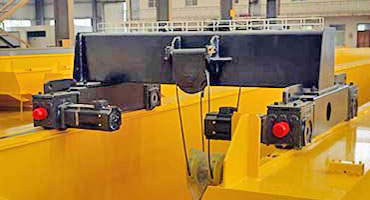
Double girder overhead travelling crane
Double girder overhead crane specifications: Capacity:5 ton to 100ton,Span: 10.5m to 31.5m,Lifting Height: 6m to 18m,Working Class:A5- A7. Ask for double girder overhead crane price.
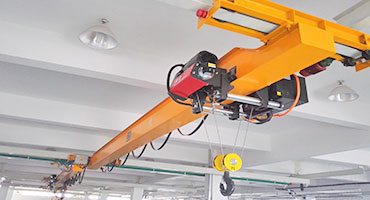
Suspension crane
Underslung overhead crane specifications: Capacity:0.5 ton to 10 ton, Span: 3m to 31.5m, Lifting Height: 6m to 18m,Working Class:A3 to A5. Ask for underrunning crane price & suspension crane price.
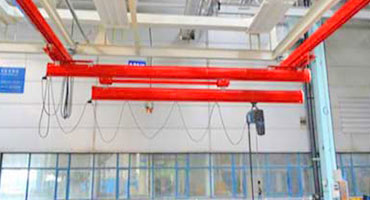
KBK crane
Overhead kbk crane specifications: Capacity: 125Kg-5000Kg,Lifting Height: 2.5m-12m,Maximum Span : 3-10m,Working Class: A3. Ask for kbk crane price & kbk light crane price.
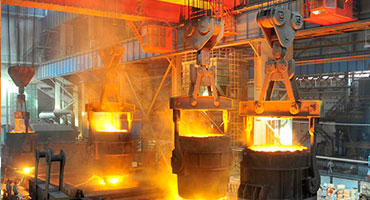
Industrial crane
Customized industrial cranes for various industries such as, steel mill, oil & gas, automobile, machinery assembly, mining, general processing, etc.. Ask for industrial overhead crane price.
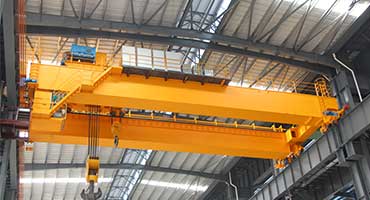
Process crane
For your specific applications, the process cranes are provided to meet your specific conditions and lifting requirements to save your crane costs.. Ask for process crane price.



